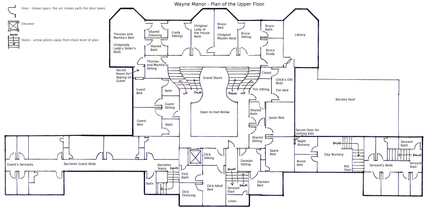HOME | DD
 geckobot — Gender Dimensions Part 3/3
geckobot — Gender Dimensions Part 3/3

#gender #lgbt #queer
Published: 2023-03-10 17:31:44 +0000 UTC; Views: 1102; Favourites: 0; Downloads: 1
Redirect to original
Description
GENDER DIMENSIONS:
A Model of Gender
Part 3/3
We have one final dimension in this model, and it's a big one!
Not everyone who experiences gender can describe it using gender concepts. Some gender isn't related to femininity or masculinity. It isn't a lack, a neutral feeling, or even a separate and distinct gendered feeling. Some people can only express their gender by relating it to non-gender concepts.
We use the term 'xenogender' to describe genders that incorporate non-gender elements. We'll show this dimension on our model as a purple star, instead of a circle, with a cross under it.
Some xenogenders can be grouped into larger categories, and we'll discuss some of those below.
Neurodivergence and mental illness can strongly affect how people experience the world. Some people feel their gender can not be disconnected from their brain make up. These genders are called 'neurogenders.'
For example:
Some autistic people struggle with social cues, and are unable to predict how a man or a woman will be expected to act in any given situation. They can grow up feeling very disconnected from gender, to the point that they may only identify as autistic, or consider their gender undefinable without also talking about their autism. A term they can use for themself is 'autigender.'
Some people dealing with PTSD feel that their gender was 'cut away' or damaged by the trauma they experienced. They might use the term 'caedogender' to describe their disconnected sense of gender.
Sexual and romantic orientation are related to gender in complex ways. Some people find that they cannot describe their gender without reference to their orientation. These are called 'orientationgenders.'
Someone who loves women, considers themself a butch lesbian, and has a complicated relationship with womanhood might call themself 'butchgender' or just 'butch.'
Someone who experiences no sexual attraction, and feels disconnected from a gender because of the sexual expectations people have of that gender, or the difficulty navigating gender roles without any interest in having a partner, may use the term 'acegender.'
Some people feel their gender can only be described as an experience, or as similar to something else. These are called 'aesthetigenders' or 'noungenders.'
For example:
A person whose experience with gender feels like that of an alien interacting with something they don't understand might say that they're an 'alien' or 'aliengender.'
A person whose gender feels like energy, always shifting and moving, components understood and the whole hard to pin down, might describe it as 'energender.'
Someone who's spent years unable to describe themself, heard a certain song, and realized it encapsulated their experience perfectly, might use the name of the song to describe how their gender feels.
And that's our model!
Gender identity can be lacking, neutral, male, female, something else, or only able to be described in relation to a non-gender concept.
It can fluctuate in strength, flow between identities, or exist in multiple states at once.
It is related to, but not the same as, gender roles, dynamics, presentation, and orientation. It is also related to, but not the same as, biological sex.
Maybe this discussion helped you find some structure in the mess that is gender. If it did, that's great! if not, that's fine too.
I'm not trying to say this is THE model of gender, or even that it is MY model. I created it as a way of synthesizing a lot of data that was hard for me to visualize and understand. I'm still working out my own point of view.
But if it makes things clearer for even one person, that would be wonderful. And if you have any insights, I'd love to hear them!
























